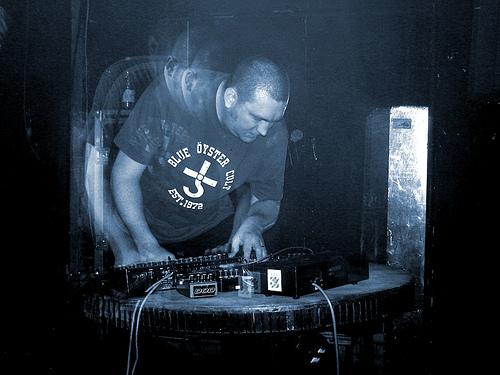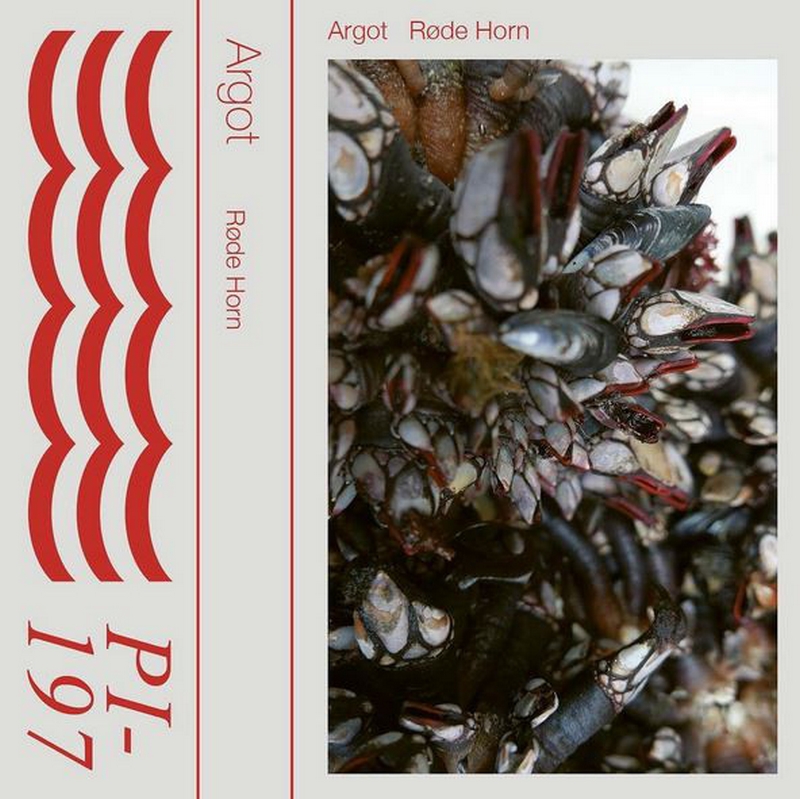Make it Weirder – The Copenhagen Scene from an International Perspective

By Ivna Franic
The periodic excitement over locally specific music scenes appears to be alive and well, having successfully survived the beginning of the Internet age and the still rising tendency of geographically displaced scenes. It would be a stretch to say that the functioning of local scenes has not at all changed, but despite the fact that the ability to publish music releases and build up an international fanbase have become easier, reliance on the immediate environment for both social and economic resources still calls for a local rootedness. And although the existence of closely linked networks that make up a music scene can be seen to have had a somewhat diminishing effect on the outdated myth of the individual artistic genius, a sufficiently internally and/or externally hyped music scene inevitably tends to become mythologized itself. The idea of a music scene being the product of a happy accident of sorts, a peculiar accumulation of talent in one place over a certain period of time, appears to be something the dominant music media discourse has yet to overcome.
The Copenhagen music scene is no stranger to this brand of idealized (self-)image. In the early 2010’s a number of features on Iceage and the Danish punk scene were published in the international music media, soon followed by the hype around the label Posh Isolation and the Danish experimental/electronic music scene, while the past few years have seen Copenhagen DJs and producers gain attention and shift focus towards the city’s “fast techno” scene. It seems like interest in the Danish music scene in international music circles recurs on an almost cyclical basis, (re)producing the impression that there must indeed be something special about this relatively small milieu if it has – over a relatively short period of time – yielded such a large number of exciting acts operating in diverse musical domains. Another often overlooked point about these enthusiastic portrayals of the city’s music landscape is that they usually come from the local scene forerunners, which on the one hand of course makes sense since they were the ones who have helped put the scene on its feet, but on the other hand Copenhagen is an increasingly international city where immigrants make up over a quarter of total population, so it felt like it was about time to bring some internationals into the conversation as well.
“The idea of a music scene being the product of a happy accident of sorts, a peculiar accumulation of talent in one place over a certain period of time, appears to be something the dominant music media discourse has yet to overcome.”
Even in the light of all the hype surrounding the Copenhagen music scene, it still might come as a surprise to locals that there are people who have actually moved to be a part of this. “I mean I came here for it,” says Cameron Pagett, photographer and writer at Passive/Aggressive and promoter with Agartha Productions, “I was just this weird guy working in DIY in LA and loosely in New York and sometimes San Francisco, and I was listening to Posh Isolation, I was listening to Janushoved, and I was coming out here quite a bit because the music was just better. It was so inspiring and very different to what I was used to but very close to what I naturally gravitate to.” The importance of being already familiar with the local music scene is something I can relate to myself – even if it wasn’t the sole nor the main reason for my move to Copenhagen, a rich and internationally recognized music scene was definitely one of the strong “pros”.
An impressive music scene is only one side of the coin, though, as Denmark is internationally notorious as one of the most difficult places in the world to make friends. If we consider the importance of a social network to the operation of any sort of culture or subculture scene, it does seem reasonable to expect that this could be a potential problem for newcomers.
“I think coming here and not being Danish – you have to kinda work on your own thing and find your place in the scene a bit, but I guess it’s like that in most cities,” Toby Ridler, the London-bred producer behind the Becoming Real moniker and member of the self-described “approachable weirdos” ZONE Collective, tells me. American musician and producer Chris Shields, also known as one half of Vid Edda, claims that it was only during the first year out of four that that he has lived here has felt alienated, and that he has in fact found himself “very quickly invited to perform and attend a variety of events. I have performed at all of my favorite places to see music, and I think that’s incredible.”
So making connections with like-minded peers seems to be easier than one might expect, while detecting the main hotspots of the scene is expectedly effortless in a city this size. Pointing out the venue Mayhem and the friendly way it is run, Ridler adds: “you get lots of great shows here in really weird spaces, that is something I love about this city.” Pagett compares Copenhagen to LA concluding that the latter is very big “so it’s kinda hard to stay interconnected outside of shows. There is no, like, Blågårdsgade or some place where you can just see everybody all the time.” The possibility of regularly encountering many participants of the scene at certain spots in the city is no guarantee of there being close relations between them, though. “I was stunned about how few interactions there were between small circles of friends,” says Shields, “A few years ago I couldn’t believe at all that two people I know who are both from Copenhagen, both make power electronics & harsh noise and both play at the same small venues didn’t know each other. That’s a scene of like eight people!”
Chris Shields explains how back in Baltimore “people were more desperate in an immediate way, which required a lot more heart and soul going into running an arts or show space, almost all of which were illegal.” He says, for years, he lived in and organized a show space: “Any chance of making money off of it was completely laughable. It felt worth it because it was making a space to create things together with a community, and the opportunity for an honest self expression was untouchable.”
Danish reluctance to mix different circles of friends aside, a smaller, more compact environment does make it easy for the actors of the scene to stay connected. On the other hand, it might also have the effect of limiting the diversity of input into the collective pool of shared ideas. “Previously living in Berlin, the scene is much more fluid there and you see a lot of crossover and more of a dialogue between the fringes of genres. I find in Copenhagen it’s a bit more reserved in terms of what lanes parts of the scenes stay in here, which is also what makes it quite cohesive,” explains Ridler, and comes back to it later: “I would love to see some more weirder nights happening here, there’s not so much pop or grime, or urban music I grew up with coming from more multicultural cities like London and Berlin.”
Shields mentions another aspect of diversity, that of mixing different arts and culture scenes. Speaking of coming up on the scene in Baltimore – a city about the same size as Copenhagen population wise – he connects that community’s versatility to shared living and practicing spaces: “The combination of a large group of passionate people and cheap, big spaces to make things in meant that there were a lot of exciting things happening while I was there. Dancers would share spaces with punk bands, who were made up of painters and sculptors, who would live inside galleries, etc etc – the whole ‘creative community’ was very closely woven together and the places that people gathered in were open to most formats. People had their friend circles, of course, but things were not clearly separated by artistic interest or medium.”
“This was largely because people had to share resources and look out for each other – the city gave basically nothing monetary or formally to any artists – so there was a lot of mixing of style,” says Shields and brings us to another point about Copenhagen scene that everyone who moves here is quick to notice. A music scene or an artist community is often built precisely around the need to share the resources (that not all individual participants would normally be able to afford on their own), which ultimately leads to sharing the ideas and artistic practices. But what happens when you operate in an environment of abundance?
Back when discussing the lack of diversity in musical expression in Copenhagen, Ridler touched on precisely this issue, one that is hard to ignore when you first come here and that “has lots more to do with economy and class and history of the country. Copenhagen is a really privileged city and is mainly white and middle class, so the melting pot of ideas here is so so different from say that of London where class divide, the mixture of minorities and different areas of the city play such big roles in the musical landscape in the UK music scene… From post punk to grime and urban dance music, you know, a lot of that music is rebel music.” The latter point resonates deeply: while I generally enjoy the shows and releases by many local artists here, I very often feel like they take place in a socio-political vacuum. Not only in the music itself, but in the discourse surrounding it, there seems to be very little to point at any sort of, even casual, commentary or relation to the Danish society. Perhaps detachment from the local context outside of the music scene bubble is down to the international aspirations Danish acts seem to have from the get go, but still, this only adds to the dispassionate impression the events on the Copenhagen scene can sometimes leave. Chris Shields explains how back in Baltimore “people were more desperate in an immediate way, which required a lot more heart and soul going into running an arts or show space, almost all of which were illegal.” He says, for years, he lived in and organized a show space: “Any chance of making money off of it was completely laughable. It felt worth it because it was making a space to create things together with a community, and the opportunity for an honest self expression was untouchable.”
Pagett echoes this sentiment when he ponders on what might be missing from the Copenhagen scene and describes one of the strengths of musical expression in the States, where “a lot of things are really difficult and you really get to hear people’s hearts, whereas here it’s more like extrapolating on theory or something, so it’s a bit more cold sounding, more detached, it’s less empathetic… There’s a lot of really great artists here that really put their hearts on the line, but sometimes I wish you could really hear that inner wailing outside of how everything here can be very stylized, or very aesthetic.” That same raw quality and desperation is difficult to get here because “people are privileged, really, and I’m not sure if it’s even possible,” Pagett hesitates before softening his claim by identifying some positive examples from the Copenhagen scene.
“The latter point resonates deeply: while I generally enjoy the shows and releases by many local artists here, I very often feel like they take place in a socio-political vacuum. Not only in the music itself, but in the discourse surrounding it, there seems to be very little to point at any sort of, even casual, commentary or relation to the Danish society.”
The perception of Danish musicians as a privileged bunch does not only stem from the general perception of the country and its people being well off – it is also down to funding possibilities, the mere existence of which is something all of the guys that have spoken to me find to be the main difference from the music scenes they were previously active in. Pagett laughs off the idea of funding possibilities in the context of music scenes in the US as “completely non-existent”, stating that there “you’re just fucked.” Shields elaborates: “For someone living in a very poor city in a country with next to zero arts funding, if you chose to spend your time making art, especially experimental art, you were 100% going to have basically no income from it. I don’t think I know anybody who is able to support themselves off of their art there – even members of quite famous bands still have jobs washing dishes at restaurants or driving trucks, etc.” While this is also to some extent a wider issue of the precarious times in which we live, times when pursuing a career in underground music (and arts in general) is something you need to be able to afford to get into in the first place, it is definitely hard to shake off the impression that around here it simply doesn’t require that many sacrifices on both the personal and professional level. This is also something that makes it difficult to take seriously any uncritical praise of the Copenhagen scene that doesn’t take into account the influence of a generous environment and a supportive infrastructure.
Another point Shields makes in relation to this opens up some new questions, mixing the specificities of this particular scene and the way younger generations of artists are able to go around the limitations of geographical scenes and local support: “When there are so many options to snap your fingers and have grant money to go on tour or put out a record on your friend’s label and just use the internet to write about it, it really doesn’t depend at all on there being a local infrastructure or community to support and stand behind it. That’s a huge difference from what I’m used to and still feels cold to me.” He goes back to it one more time, recounting his conversations with friends about “what makes a small local scene seem like it’s a cohesive thing with its own local culture – it’s definitely hard to say now that people are so good at promoting themselves internationally on the internet. That’s maybe a different conversation, but one that I would like to have more.”
This might not only be down to the individual promotion skills, it could also have something to do with the local music media and music aficionados’ almost religious-like devotion to following the events, artists and releases on the Copenhagen scene. Either way, it is precisely having open conversations, including different participants, and allowing for more of constructive criticism to enter the discourse around local music scene that can help it self-reflect, incorporate more diverse influences and grow in ever more interesting directions.
Info: The essay “Make It Weirder: The Scene from an International Perspective” was originally published in Passive/Aggressive #8 on November 1st. Read more and find a copy via our prints section. Ivna Franic is a Copenhagen-based writer and promoter. She has been part of the music scene in Zagreb 10 years and contributed to several international publications.



